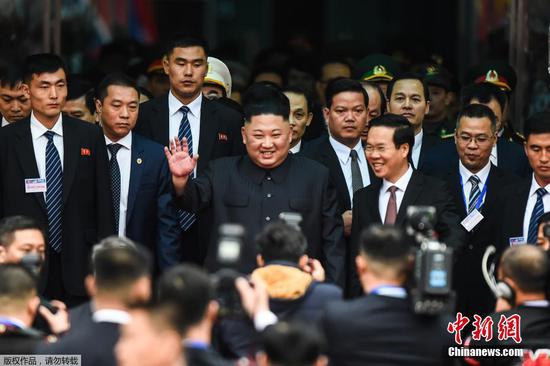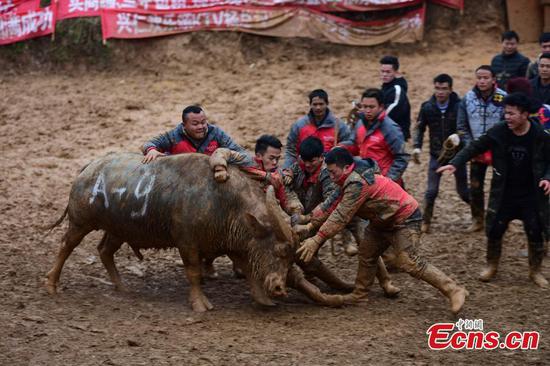As China's tech companies continue to grow, so too does their demand for qualified employees.
JD.com, a leading online retailer, has announced plans to recruit around 15,000 new staff this year. Around 10,000 will be employed in its logistics arm, and the remainder in retail sales and with other subsidiaries.
Retail, logistics and digital technology have taken shape as the core businesses of the Internet giant.
At the end of the third quarter of 2018, JD.com boasted a 170,000-strong staff and a huge supply-chain network, which led to tens of millions of jobs in outsourcing and third-party online stores.
Likewise, e-commerce company Alibaba, which owns China's largest web-based shopping platform, last week pledged no layoffs in 2019. Instead, it will continue to recruit new staff, ramp up training programs and utilize more platform resources to help create more jobs.
"This year we will not lay off employees, but will greatly utilize the Alibaba platform to stimulate consumption and generate more orders for the manufacturing and services sectors instead," Alibaba's CEO Daniel Zhang said.
The moves come as an encouraging sign for the country's job market and have helped mitigate worries about decreasing job opportunities in the Internet sector spreading on social media.
Analysts said the tertiary industry, accounting for more than half of China's GDP last year, has served as the ballast stone for a stable job market. Services, mainly labor-intensive sectors, are more effective in creating new job opportunities than the traditional secondary industry.
"Every percentage point of the country's GDP growth is translated into more new jobs," said Wu Ge, chief economist of Changjiang Securities, citing statistics in recent years.
Thanks to sprouting new business models and industries, labor demand increased at an unprecedented pace in sectors including e-commerce, online entertainment, finance and smart manufacturing, as well as web-based ride-hailing and food delivery.
Ji Xiaochen, founder of Beijing Moviebook Technology, a digital media company, worked until midnight over the just-finished Spring Festival holiday, busy revising business plans.
"It is very fortunate for our company to meet the expansion period of artificial intelligence, and we aim to double our staff this year," Ji said.
Alibaba also said a number of new occupations, like trainers for AI customer service staff, engineers for its cloud computing business and shopping guides for its new retail business, have emerged on the platform.
The total staff at Alibaba Group and its financial service affiliate Ant Financial have exceeded 100,000 for the first time.
The overall jobs-to-applicants ratio in China stood at 1:27 in the fourth quarter of last year, indicating robust demand, data from the Ministry of Human Resources and Social Security showed.
The data also showed the private sector played a major part in propping up employment with faster staff growth, and that more migrant workers preferred central and western regions.
China's policy-makers attach great importance to employment, which, along with consumer prices, directly affects everyday life and determines the health and prospects of the economy.
An array of measures were rolled out to ensure a stable job market, including insurance payment rebates for employers, government subsidies for skill training, and bigger tax cuts.
Favorable policies were also introduced for people setting up their own businesses.
"From central authorities to local governments, the pro-employment measures have gathered concentrated efforts and ensured stable employment," said Mo Rong, vice president of the Chinese Academy of Labor and Social Security.
About 13.61 million new jobs were created in urban areas last year, hitting 123.7 percent of the annual target, a record high. The figure has stayed above 13 million for six consecutive years.
Major indicators remained tame. The registered unemployment rate came in at 3.8 percent at the end of last year, the lowest in more than a decade, and the surveyed rate was at around 5 percent, lower than the 5.5 percent pre-set target.
Given steady economic performance and rapidly growing new growth drivers, China is confident and capable of handling all kinds of risks and challenges and realizing more higher-quality employment, said Meng Wei, spokeswoman for the National Development and Reform Commission.


















































